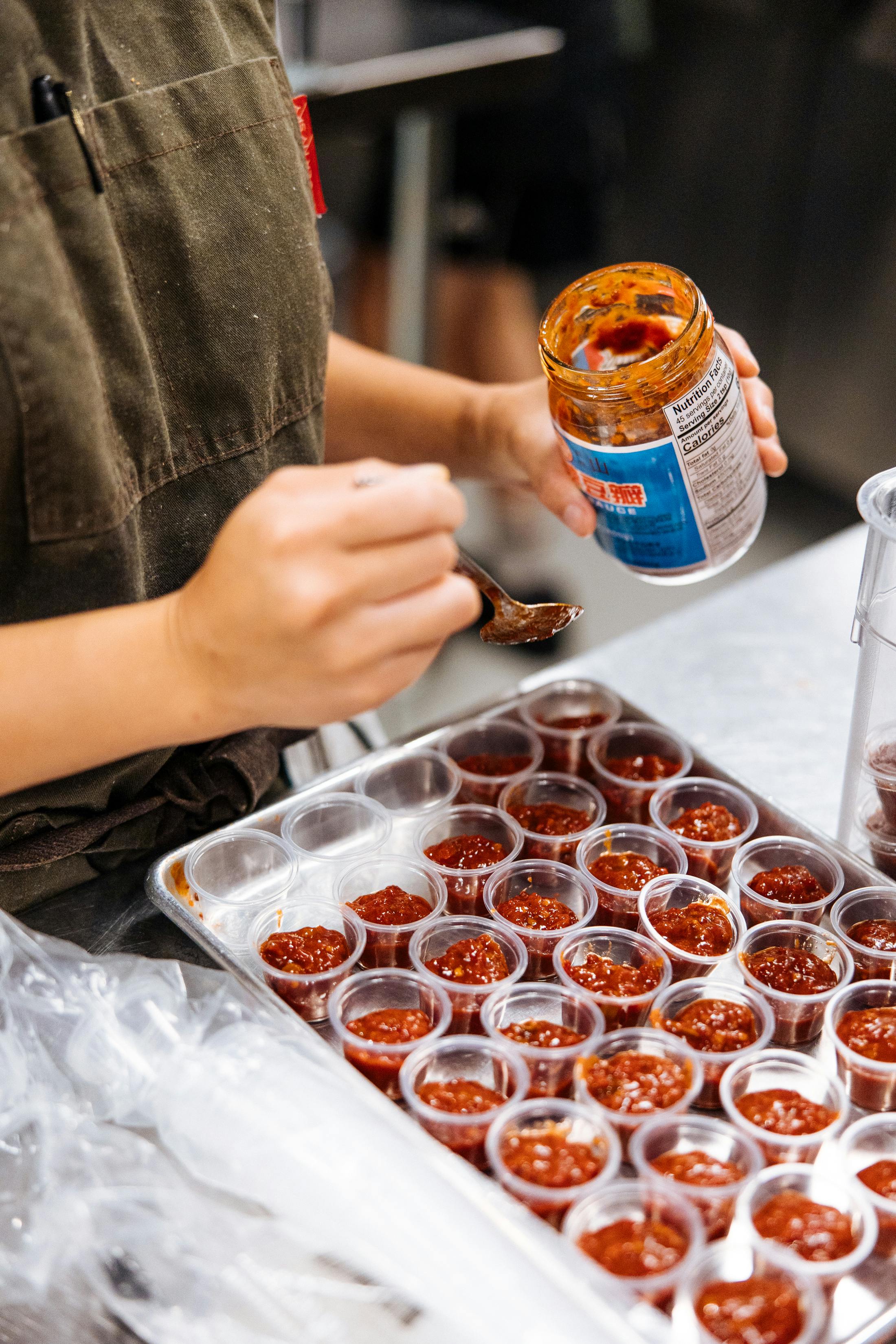Competition is rife in the restaurant industry, and it is only getting tougher in these unprecedented times brought about by the COVID-19 pandemic. F&B restaurants are constantly seeking new and innovative ways to stay ahead, but it is also necessary for them to keep a close eye on their P&L (profit & loss) if they want to remain competitive in the restaurant space. To ensure survival, restaurateurs have to keep their profit margins rising. To do this, many food businesses have resorted to technology-inspired solutions.
Restaurants have so many different avenues they can travel down, but one of the most common routes many seem to take is operating out of CloudKitchens® Delivery Kitchens due to the widespread benefits they gain, such as being situated in high-traffic locations and having an already-established customer base.
If you are wondering how a CloudKitchens® Delivery Kitchen can boost your restaurant’s P&L, here’s an in-depth guide that provides all the information you seek.
What Exactly is a Profit Margin?
The profit margin of your restaurant simply entails the total amount of money you have made from sales. In order to calculate this, all you need to do is subtract all your expenses from the total revenue made. Simple right? What’s more, your profit margin can be represented as a percentage or an overall figure.
It is worth noting that you can figure out your profit margin per dish to see which items on your menu are really bringing in the cash and which ones might need to be switched out with something fresh. Alternatively, you can calculate your profit margin by time period, such as every week, month or year.
Restaurants will see most of their revenue come from the sale of food and drinks, which is no surprise. In terms of expenses, it is not so clear-cut as they will pop up from numerous aspects of the business, such as:
- Ingredients needed to cook the dishes
- New equipment & general repairs
- Rent
- Utilities
- Employee salaries, benefits & other labour costs
- Brand marketing
- Taxes
- Credit card & POS system fees
These are just some of the general expenses eateries face, but there are a whole lot more, so keep that in mind. Given the various fluctuations in revenues and expenses, restaurants’ P&L margins generally hover around 3-5%. But, in order for your business to become a goldmine, you need the P&L to be in the region of 15%.
Gross Profit vs Net Profit
You may have heard the terms gross profit and net profit, but do you know what differentiates them?
Simply put, your gross profit margin equates to all the money you have remaining after taking into account the Cost of Goods Sold (CoGS). This gives you a great idea of how your restaurant is doing financially and how much theoretical profit it will make. To work out your gross profit, you can use the following formula:
Gross profit margin = ((selling price – CoGS) / Selling price) 100
Let’s put the formula into use with some simple figures. If you were to sell $1000 worth of food in a day and the cost to prepare it was $500, then you would find out your gross profit by doing this:
((1000 – 500)/1000)100 = 50%
With gross profit out of the way, let’s take a closer look at net profit, which revolves around the actual profitability of your eatery. To figure this out, you should use the below formula:
((Total revenue – total expenses)/revenue)100
Let’s take our aforementioned example and imagine that an order had to be remade due to it being incorrect. While the gross profit would have been 50%, the expenses associated with remaking the dish have lifted the overall expenses to $560. As a result, the net profit margin would be calculated by doing the following:
((1000- 560)/1000)100 = 44%
How Can You Improve the P&L of Your Restaurants?
There are plenty of ways you can go about boosting your restaurant’s P&L, but here are three main ways to do it:
- Increasing sales volume
- Reducing costs
- Raising prices
The first two options are probably going to be a restaurant’s go-to choices because both can be done relatively easily. If the prices of items on the menu were to go up, it would likely have an adverse impact on the business as many customers may be put off and go somewhere else to eat. If you are wondering how to reduce costs to help the P&L of your restaurant, our recipe costing guide will greatly assist you.
How Dark Kitchens Can Push the P&L of Your Restaurants in the Right Direction
Restaurant owners are often seeking solutions to increase sales and decrease costs in order to help their business thrive. Since there are so many potential solutions out there, picking the right one is imperative as there won’t be many lifelines available if you choose incorrectly.
Cutting down on labour, rent and other expenses is the dream for restaurateurs and this is exactly what CloudKitchens® delivery kitchen providers like Chef Collective offers. Affordable spaces allow you to reduce costs while having all the tools needed to boost sales volume.
How exactly do dark kitchens do this? Let’s find out!
1. Operational Expenses Decrease
Without any dine-in customers, furniture, eye-catching decor, and a prominent front of house area are no longer needed.
2. Rent Falls Drastically
High rents can be the kryptonite of many restaurants since the pressure to keep up with payments can cause eateries to raise prices or adopt other practices that may do more harm than good. F&B businesses that operate out of CloudKitchens® delivery kitchens are already set up in a central location but don’t have to fork out the eye-popping amount of rent that other traditional businesses in the area do.
3. Lower Labour Costs
Since you will only need a team of chefs to cook the food, the amount of labour needed is much less than in a normal brick-and-mortar restaurant. Waiters, bartenders and general managers are no longer a necessity, meaning there is a lot of money to be saved on the payroll front.
4. Flexible Rental Terms
Opening a restaurant is no easy feat, especially when considering the amount of money you need to invest in getting it off the ground and running. Even if you pick the ideal location with throngs of customers, there is no guarantee that your restaurant will be able to maintain a strong P&L, which is crucial to its survival. If this becomes a problem and you are locked into a lengthy rental agreement, it can become a real headache.
Dark kitchens tend to be a lot more flexible, even when it comes to rental terms. Plus, everything is already in place when you move in, meaning there are just a few things to iron out, such as equipment and minor renovations, before you can open your doors and serve the masses. Furthermore, withdrawing from a rental agreement is a lot less hassle since they tend to be shorter and less costly to the business.
5. Hit the Ground Running
Another way dark kitchens can benefit your restaurant is the short timeframe needed to get set up. Traditional eateries could need up to a year to open their doors as they have to secure a premise for themselves, do all the necessary renovation work, get all the licences required, and so much more. In a CloudKitchens® delivery kitchen, you can get set up in a matter of weeks and get started on serving customers.
6. Keep Track of Orders
In a dark kitchen, keeping track of orders is incredibly simple as every order placed comes through on a tablet – even if you work with more than one food delivery platform. With all the orders easily tracked, you’ll never have to deal with the repercussions of missing one.
Since dark kitchens don’t have a dine-in area and don’t require waiters, you can focus on preparing top-notch food that really hits the mark and provides a great experience for your customers. This way, they are more likely to stay loyal, which is an integral part of increasing the P&L of your restaurants.
7. Be Part of the Revolution
There is no denying that online delivery orders are skyrocketing around the world. In Australia alone, the revenue generated from online orders is expected to hit US$2,280 million this year. Since dark kitchens provide the perfect environment to take advantage of this ongoing revolution, your restaurant can reap the rewards and send your P&L margin soaring upwards.
Ready to Launch Your CloudKitchens® Delivery Kitchen?
Dark kitchens offer an abundance of incredible benefits that contribute to a greater P&L for your restaurants. However, just operating out of a CloudKitchens® delivery kitchen doesn’t guarantee an influx of money. To achieve huge financial rewards, you need to ensure you do the following:
- Have a qualified and experienced team of chefs
- Prepare a mouth-watering menu that’s priced fairly
- Target an untapped or undersupplied market
- Promote your brand properly using different methods
- Find the right supplier for your ingredients and equipment
Having all this in place is sure to be beneficial to your restaurant’s P&L!
If you have questions about dark kitchens, find out more here, or simply fill up the form at the bottom we will provide you with all the assistance you need.

